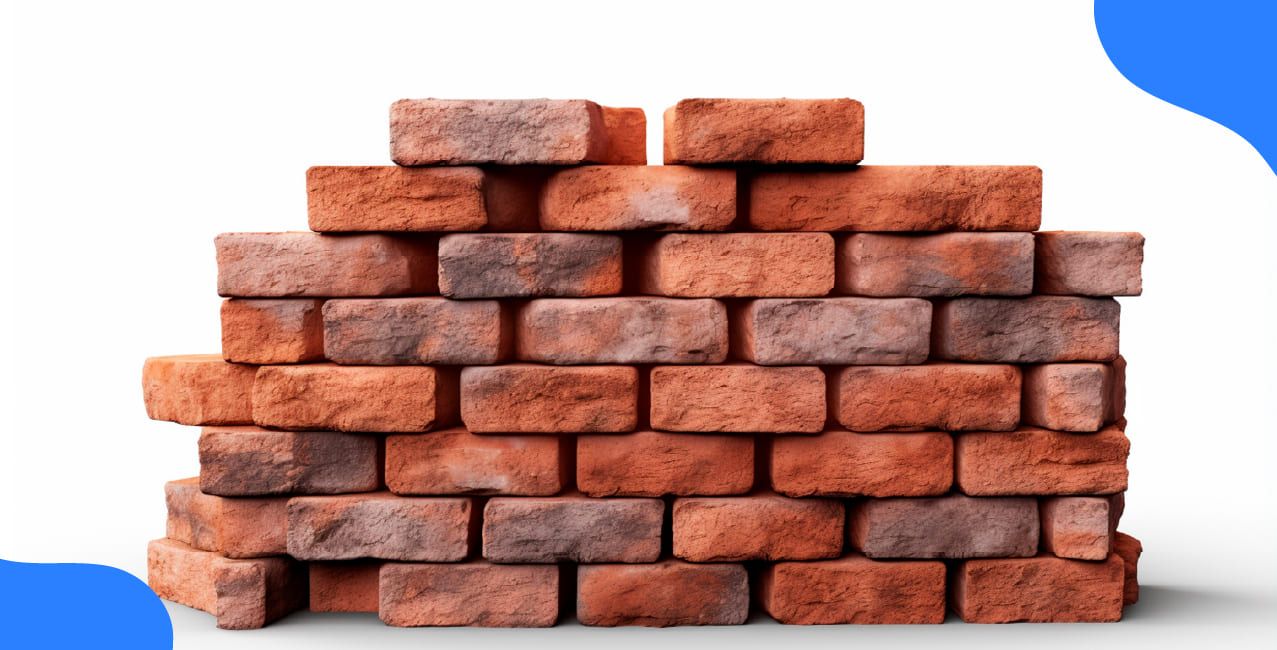
Author
LoansJagat Team
Read Time
6 Min
24 Sep 2025
GST on Bricks: Complete Guide to Rates & Compliance
Key Takeaways
- GST refers to the tax applicable to the sale and supply of goods and services. If you are buying bricks, then you have to pay GST on it.
- Previously, the rate of GST on bricks was 12%; however, the rate of GST on bricks has changed to 5% in the 56th GST Meeting Council.
- Along with bricks, GST rates have changed on many goods and services, such as jets, yachts, air conditioners, and many more.
GST on bricks is the tax charged on their sale and supply under the Goods and Services Tax regime. Bricks are one of the most widely used construction materials, and even a small change in their tax rate directly impacts the overall cost of building.
Suppose Nisha is a contractor. She bought 20,000 bricks at ₹6 each. The base cost is ₹1,20,000. With 5% GST, the tax adds up to ₹6,000, making the final bill ₹1,26,000. Earlier, under 12% GST, the tax alone would have been ₹14,400, taking the cost to ₹1,34,400.
The difference of ₹8,400 shows how the revised rate reduces construction costs. In this blog, we will learn about GST on bricks, the impact of GST on brick prices, and input tax credit on bricks.
GST On Bricks
In the 56th meeting of the GST Council, the Finance Minister has revised the GST slab rates and GST rates on various goods and services. This has also impacted the GST on bricks.
Earlier, the GST on bricks was 12%, which made them costlier. Now, the GST on bricks has been reduced to a rate of 5%, supporting affordable housing and encouraging infrastructure projects. The following table highlights the change in GST on bricks:
The above shift gave much-needed breathing space to developers and contractors who rely heavily on bulk brick purchases.
Bonus Tip: Do you know that the 56th GST Meeting Council has removed two GST slabs, 12% and 28%. So, now there are two key GST rate slabs: 5% and 18%.
Impact Of GST On Bricks Prices
The reduction in GST has had a direct effect on brick prices. Earlier, when the tax rate was 12%, each brick became noticeably costlier. With the revised 5% rate, construction companies and individuals are saving a considerable amount.
Let’s understand this better with the help of an example. Suppose:
- Price of one brick = ₹6
- GST at 12% = ₹0.72; Final price = ₹6.72
- GST at 5% = ₹0.30; Final price = ₹6.30
Now, if you multiply this by large orders, the savings become very clear. The following table highlights this:
The above-mentioned table shows how even a small percentage change in GST brings big differences in overall spending. Change in rates of GST on bricks provides a relief to the builders when ordering in bulk.
Read More - GST on Building Materials – Rates for Cement, Steel, Bricks & More
Types Of Construction Material And Their GST Rate
While GST on bricks is 5%, other construction materials fall under different slabs. This difference impacts the total cost of a project, as builders rarely use only one material. The table below highlights the GST rates of common construction materials:
From the above-mentioned table, you can see that while bricks are affordable under GST, materials like cement and marble still carry a bit higher tax rates.
Bonus Tip: Did you know that in the 56th GST Meeting Council, the GST rate on cement has been reduced to 18% from 28%.
Impact Of GST Cut On The Construction Industry
The cut in the rate of GST on bricks has had multiple benefits for the construction industry. Since bricks form a significant part of building costs, lowering their tax rate helped in reducing overall expenses. The following are the key impacts:
- Builders save a good amount on bulk purchases.
- Affordable housing projects become more viable.
- Brick manufacturers get steady demand due to lower prices.
- Homebuyers indirectly benefit through better project pricing.
To understand how brick costs fit into project budgets, let’s see the share of bricks in different types of projects [assuming price per brick is ₹6 and Share of brick cost (%) = (Brick cost ÷ Total project cost) × 100]:
The above-mentioned table shows that even a small tax reduction on bricks can lead to big savings in bigger projects.
Learn More - GST for Small Business: Complete Guide to Compliance & Benefits
Input Tax Credit (ITC) On Bricks
A key feature of GST is the Input Tax Credit (ITC), which enables businesses to offset the GST they have already paid on input goods and services against their tax liability on sales.
For brick manufacturers, GST paid on raw materials like coal and clay can be claimed against the GST collected on sales. For builders, GST paid on brick purchases can be claimed while filing returns. The following table shows an example of this:
The above-mentioned mechanism ensures there is no double taxation, and it reduces the final tax burden for businesses.
Conclusion
GST on bricks plays an important role in shaping construction costs and overall project budgeting. To make walls, roof, patios, pathways, garden beds, fire pits, etc., bricks are required.
The reduction in the rate from 12% to 5% on GST on bricks brings great relief to brickmakers, contractors, and developers.
While buyers may not always see direct price cuts in housing, the industry overall benefits from reduced expenses and taxation.
Overall, GST reforms on bricks promote transparency, reduce financial burden, and support the growth of the construction sector.
FAQs
1. Why are refractory bricks taxed at 18% GST?
Because they are industrial products used in furnaces and specialised industries.
2. Do GST benefits on bricks reach homebuyers?
Indirectly yes, but final property prices depend on other factors as well.
3. Which HSN code is used for refractory bricks under GST?
HSN Code 6902 is used for refractory bricks.
4. How many types of GST are there?
There are three main types of GST in India: CGST (Central GST), SGST or UTGST (State GST or Union Territory GST), and IGST (Integrated GST).
5. Which HSN code is used for fly ash bricks under GST?
HSN Code 6815 is used for refractory bricks.
6. Which HSN code is used for clay bricks under GST?
HSN Code 6901 is used for clay bricks.
7. Which HSN code is used for paving blocks and bricks under GST?
HSN Code 7016 is used for paving blocks and bricks.
About the Author

LoansJagat Team
‘Simplify Finance for Everyone.’ This is the common goal of our team, as we try to explain any topic with relatable examples. From personal to business finance, managing EMIs to becoming debt-free, we do extensive research on each and every parameter, so you don’t have to. Scroll up and have a look at what 15+ years of experience in the BFSI sector looks like.

Quick Apply Loan
Subscribe Now


